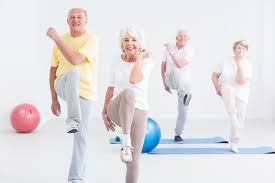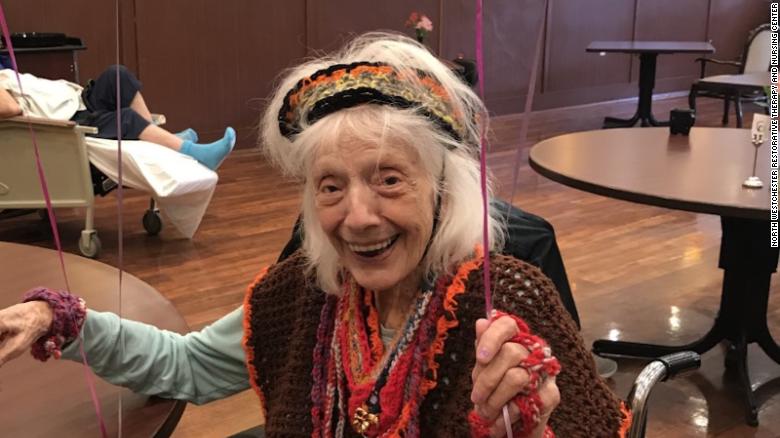At Family inHome Caregiving, we stress the fact that exercise, social interaction and a good diet are keys to longevity for our senior clients, most of which are in their 90’s or even 100’s. The most difficult of the three in the current COVID-19 environment is social interaction, but this doesn’t have to be in person. Keep in touch with your friends and family with a zoom or facetime call. A good diet isn’t hard to do either. Do a google search on the Mediterranean diet—it is delicious. There are a number of quick and healthy ways to cook salmon, which is very good for you. Paired up with some vegetables and a nice salad and you will enjoy it. Exercise is not that hard to keep up with either. The Centers for Disease Control and Prevention (CDC) recommend at least 150 minutes of moderate-intensity exercise each week which means taking a brisk walk of 20-30 minutes per day. Some physicians suggest that you mix it up so that you don’t get bored and you use different muscle groups. That means doing a bit of biking, swimming or yoga.
Monterey, CA Seniors Without A Regular Exercise Routine Should Walk More
At Family inHome Caregiving, we stress that seniors should get the proper amount of exercise, plenty of social interaction, and eat a healthy diet. Many of our clients are in their 90’s and some even over 100 and most have led very healthy lives which lead to their longevity. It’s difficult at that age to develop an exercise routine, but if you don’t have the energy, try going for long walks. You can go to the beach, many of our public parks, or just walk around the neighborhood. You might even make some new friends. Being sedentary, with low overall fitness, raises your mortality risk as much as or more than smoking, high blood pressure and heart disease. An analysis of studies on people ages 54 to 65 found that binge-watching TV for four plus hours per day may make you 35% more likely to develop blood clots in the thigh and lower leg.
People Are Living So Long Many Seniors Now Caring For Their Own Parents
The Wall Street Journal recently ran a story about the fact that seniors are living longer and sometimes forced to care for their own parents in what are supposed to be their relaxing golden years. We believe it! Most of our caregivers are usually in their 20’s or 30’s or they are 50 and older. The Journal story profiled Bob Tiller, an 80-year old retired lobbyist for nonprofits, who manages care for his 101-year old mother. Both Bob and his mother are in continuing care facilities, but very far away from each other. If there is an emergency with his mother, he makes the five-hour drive to see her. He’s not alone. An estimated 19% of the nation’s 53 million unpaid family caregivers are 65 and older, up from 13% in 2004. Those 75 years and older make up a healthy 7% of our nation’s caregivers, according to the 2020 Caregiving in the U.S. report by the National Alliance for Caregiving and AARP. This will continue to contribute to a growing crisis as people live longer and there aren’t enough caregivers to care for them.
AARP Finding Solutions To Live Longer In A Healthy Manner
It’s important to increase longevity only if we can find ways to do so in excellent health. When the United Nations declared the years 2021 to 2030 the “Decade of Healthy Aging,” it noted that there is a growing gap between how long someone will live and how many healthy years of life he or she can expect. AARP recently convened an international panel of experts for its Global Conference on Redefining Health : New Approaches for How We Live And Age.” The focus is on ensuring access to health care services for all older adults, strengthening the availability of long-term care, supporting aging in place and caring for older people in crisis conditions. They have made significant progress. Just one example is the U.S. hospital-at-home program which works to reduce strain on the health care system by offering us quality care in our own homes. This has been particularly important during the COVID-19 pandemic, which has many hospitals overloaded. The program has been so successful in the U.S. that its’ been expanded into Asia, Australia and Europe.
American Longevity Trend Not Holding With COVID-19
The trend of Americans living longer and longer was broken last year, thanks in large part to deaths from COVID-19, although not helping was the increase in drug overdoses, growth in deaths from heart disease, diabetes and homicide. The average life expectancy dropped 1.8 years to 77 years in 2020, well above analyst estimates. “I knew there was going to be a decline, but I didn’t expect it to be this large,” CDC’s National Center for Health Statistics and author of the report Elizabeth Arias, told The Wall Street Journal.
https://www.wsj.com/articles/life-expectancy-in-u-s-declined-1-8-years-in-2020-cdc-says-11640149261
One Of The Secrets To Longevity Is Getting The Proper Amount Of Exercise
Two studies now agree that the secret to longevity is getting in about 7,000 to 8,000 daily steps per day, which equates to only 30-45 minutes of walking per day! An alternative to walking is getting into a sport like tennis, cycling, swimming, jogging or badminton for about 2.5 hours per week. The two studies followed more than 10K men and women for decades, and found that this type of physical activity reduces the risk of premature death by as much as 70%. The study also said there may actually be an upper limit to the longevity benefits of being active, and pushing beyond that is unlikely to add years to your life span, and, in extreme cases might even be detrimental
Monterey County Gains Another Centenarian As Stanley Weiss Celebrates 100th Birthday In Pacific Grove
Former Monterey High football coach celebrated his 100th birthday. He first came to the Peninsula in 1952 where he landed a job as the varsity football coach for Monterey Union High School. At a young age, he lettered in football, basketball and track in high school before going on to play at Ohio State. He served in the Army Air Force during World War II before going on to get a Masters Degree in Education from UCLA.
Searching For The Fountain Of Youth : What Does It Take To Become A Centenarian : By Derek Baine
For decades, people have been searching for the fountain of youth, not just to look good but to try and avoid the inevitable—death. There is a field of scientists called biogerontologists that are working in a fast-developing field to not only maximize the average lifespan, but also to increase the “healthspan,” which is the number of years we spend free from disease, disability and impairment. Humans go through the aging process in a different manner than some animals, which may provide clues to growing older gracefully. Every year a human is alive, their risk of dying increased by 10%. In your 30’s, for instance, your odds of dying in any given year are less than one in 1,000. However, this 10% compounding effect adds up quickly. Tortoises, some kind of salamander and fish and burrow-dwelling rodents called naked molerats all have a risk of death unrelated to how long they have been alive. This phenomenon is called “negligible senescence” and is being studied avidly by scientists.
https://www.wsj.com/articles/the-best-remedy-for-our-diseases-aging-less-11618003335
Can The Secret To Longevity Lie In This Ugly Old Rat? By Derek Baine
For decades, people have been searching for the proverbial fountain of youth, and now some researchers are focusing on an ugly Mole Rat, who at 39 years old has outlived his counterparts by a multiple of five times. One researcher believes a factor may be that Mole Rats live underground, in dark tunnels away from the sun, and lack Vitamin D. Google has launched a biotech spinoff called Calico Labs, which is focused on combating aging and age-related diseases. Hopefully, this old Mole Rat will give us some clues.
Senior News : Average American Life Expectancy Dropped By An Entire Year
The pandemic cut the U.S. life expectancy by a full year in the first half of 2020, reflecting the toll taken by COVID-19 as well as a rise in deaths from drug overdoses, heart attacks and diseases and side-effects caused by the coronavirus. The last time there was a drop this dramatic was during World War II. It’s a huge step backwards. Americans now have the same life expectancy as they did in 2006, according to the National Center for Health Statistics (NCHS), a part of the Centers for Disease Control and Prevention (CDC). Black and Latinos were hit the hardest, with 2.7 years shaved off of the life expectancy of Black Americans, 1.9 years off of Latino Americans and 0.8 years off of White Americas.









